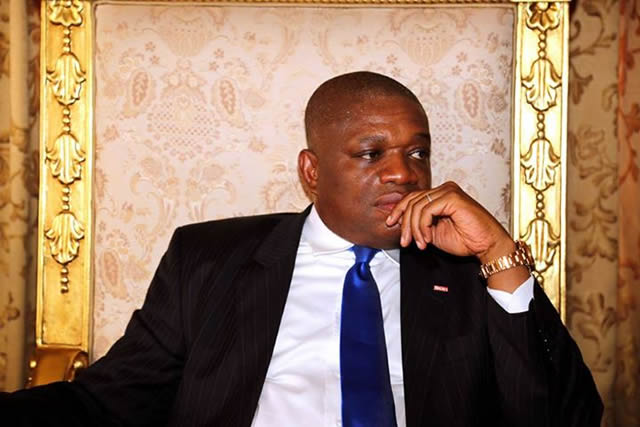When his son secured admission to study medicine at the Osun State University after a couple of efforts, the joy of Babatunde was boundless, but when he was handed the bill of N650,000 as tuition and other sundry expenses, his heart skipped a beat.
The bill is exclusive of accommodation, feeding and the likes.
His concern, as he told our correspodent, is that why should the bill be that high in a public university. The situation is almost the same in most state-owned universities in Nigeria, except a few like the Lagos State University, LASU,where the students pay averagely about N60,000 per session. Universities owned by the Federal Government charge between N30,000 and N50,000 as fees, according to findings by this paper. But if the fees charged should be high, why the complaint about poor funding of universities?
Budget for education: Nigeria has not been able to meet international standards regarding budgetary provisions for education and even has been doing far less than some of her neighbouring countries. In six years, Nigeria budgeted N3.6 trillion out of N55.3 trillion for education.
The period covers the year 2016 to 2021. In 2016, out of the total budget of N6.06 trn, the sum of N369.6 billion or 6.7% of the budget was allocated to public education. In 2017, N550 bn or 7.38% was allocated to education out of N7.29 trn budget, while in 2018, N605.8 bn or 7.04 % was given to education out of N9.2 trn budget. In 2019, N620 bn or 7.05% was allocated to education out of the budget of N8.92 trn, while in 2020, N671.07 bn or 6.7% was given education out of N10.33 trn budget.
In 2021, N742.5 bn or 5.6% was allocated to education out of a budget of N13.6 trn. On the other hand, according to reports by the World Bank, Ghana allocated 23.81% of its national budget for education in 2015, 22.09% in 2016, 20.1% in 2017 and 18.6% in 2018. For South Africa, it has kept increasing allocations to the education sector from R246 billion or 16.7 % in 2018, R310bn in 2019, R 387bn in 2020 and projected that it hit R416 bn by 2023/24.
Treasury Single Account and other accounts: For federal universities, schools fees are paid into the TSA and the money goes into the coffers of the Federal Government which gives the institutions subventions from the general purse and pays the university workers. Though state governments don’t run TSA, it is a federal innovation, they too have dedicated accounts where monies like school fees from their institutions are paid into. Some states even have agencies helping to collect such fees and revenue on their behalf. To give an idea of how much could accrue from fees, the University of Nigeria, Nsukka, has a population of about 35,000 students and each student pays N50,000 as fees giving a sum of N1.75 billion. The Federal University of Technology, Akure, FUTA, has about 5,000 students and charges an average of N30,000 as fees giving a total amount of N150 million.
Regarding the numerous certificate, diploma and other part or full time courses run by the universities, what happens is that monies from them are paid into accounts different from TSA, but after making provisions for payment of lecturers, running costs and other costs, whatever is left is paid into the TSA. The same goes for JUPEB, IJMB and others run by the universities.
What about grants: Grants given to the universities by various bodies and groups are specific on their usage and are project tied. Recently, the Vice Chancellor of the University of Lagos, UNILAG, Prof. Oluwatoyin Ogundipe, disclosed that the school attracted grants valued at over N17 billion in the last four years. The truth is that not one naira of the money can be used for building hostels for instance if the money is not meant for such by the givers.
Subventions from government: For federal universities, the subventions given them by the FG is calculated based on the staff strenght, number of students, locations and other factors. That means they don’t get the same amount from the government. Though how much each gets is also dependent on how deep the pocket of the government is at any point in time. There are some federal universities yet to get take off grants from the government years after being set up.
Last year, Non-Academic Staff Union, NASU and the Senior Staff Association of Nigerian Universities, SSANU, of Ekiti State University, Ado Ekiti, had to go on protest because subventions to the school were not paid regularly. Their leaders, Comrades Kolapo Olatunde and Olojede Olayinka, also alleged that no capital vote was released to the school for 10 years.
Transparency in the system: There is no doubt that the issue of transparency is a big factor. Even the little the universities generate internally through business ventures and the likes are not managed well. Speaking on the matter, a social commentator who is also a trained banker, Mr David Bayo, recalled that the crisis that rocked UNILAG recently was attributed by a party to the issue of poor handling of finance.
“There is no doubt that the adoption of the TSA affected the manner VCs, Rectors and Provosts dip their hands into their schools’ purses. Almost every Kobo goes back to the government which in turn sends whatever it likes back to the schools. However, the question to be asked is how do these VCs and others manage the little they make from other avenues?
“There is need for transparency in the system. While the government needs to put in more efforts regarding funding, the management of the schools must also come out clean and clear in whatever they do. Shrouding incomes and expenses in secrecy ought not to be heard of in our ivory towers where we should have men and women of integrity,” he said.
How much is needed to run a university annually? Opinions are divided on how much is required to run a university annually. This is because the size and nature of courses are important in determining the figure to look at. But going by the fact that the Federal Government usually allocates N4 billion as take off grant for its newly-established universities, one may be tempted to think that is enough.
Also the call by the leadership of the Academic Staff Union of Universities, ASUU, that the National Universities Commission, NUC, should at least mandate those who want to set up new universities to put aside between N30 and N40 billion as running costs for such for at least three years could mean that an average university may need about N10 billion to run annually.
Some expenditures borne by universities: Whether they are state or federal universities, it is the owner government that pays staff salaries and provides facilties. However, some expenses are borne by the management. The funds for such are sourced from internally generated revenue. One of these is the cost of electricity. There have been instances where power firms disconnected universities from the national grid. Ikeja Electric did that to the Lagos State University, LASU, last year. To know the enormous responsibility that has become on the management of universities, UNILAG could be an example. In about a year, UNILAG paid over N1.1 billion as power bill to Ikeja Electric. The cleaning of hostels is mostly sourced out by the schools.
How best is it to fund varsity education? In Nigeria, apart from the government, the major financier and provider of facilities is the Tertiary Education Trust Fund, TETFund. Few days ago, the Executive Secretary, Prof. Elias Bogoro, at an event in Lagos, said the fund spent over N196 billion on facilities and other things in public universities in the country in the last three years. The same amount was spent on polytechnics and colleges of education.
Delivering the lecture recently during the 52 Convocation Ceremony of UNILAG, the Speaker of the House of Representatives, Rt Hon. Femi Gbajabiamila, said, “There is the issue of how we finance tertiary education in Nigeria. This is an area of much controversy, which is understandable in a country as ours. However, two things remain true. The first is that building the kind of institutions we need and desire will require significant investments.
“Secondly, the current approach is neither adequate nor sustainable as it heavily depends on subventions from the federal and state governments. Therefore, we must agree to use the instruments of policy and legislation to advance a new framework for funding tertiray education in our country.”
VANGUARD






